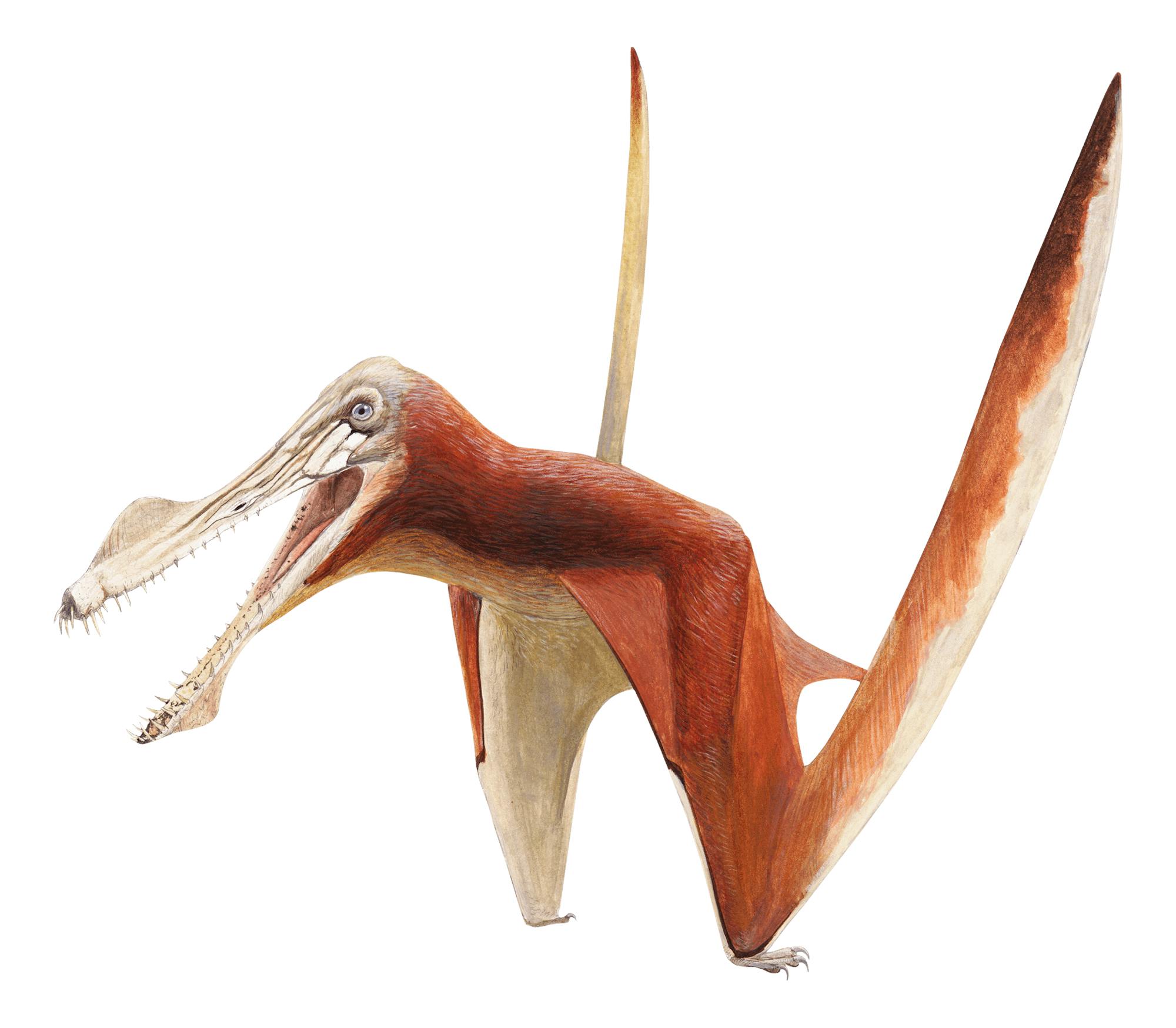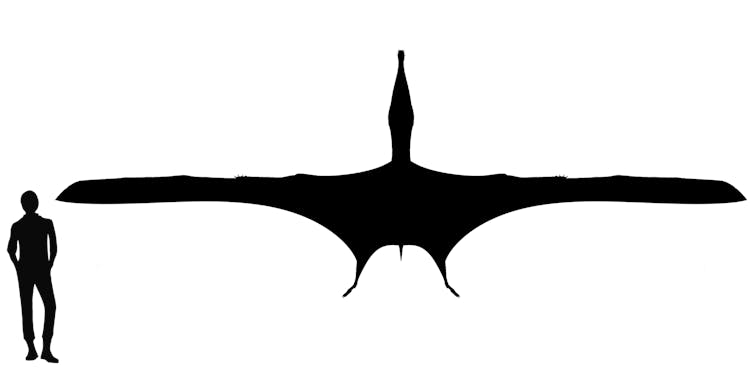


In 1994 Yuong Nam Lee named a new species of Coloborhynchus, C. wadeighi, based on a specimen found in the Lower Cretaceous Paw Paw Formation, north of Fort Worth, Texas. In 2008 Taissa Rodrigues and Alexander Kellner gave this species its own genus, Uktenadactylus, citing anatomical differences and the 30 million year gap between C. wadleighi and the type species of the genus, C. clavirostris. The genus is named for Uktena, a horned serpent of Cherokee myth, and the species honors Chris Wadleigh who discovered the specimen.
Uktenadactylus is only known from a single snout fragment. It measures roughly 16 cm (6 inches) long, 5 cm (2 inches) wide, and 8 cm (3 inches) tall and represents the distal end of the upper jaw. The end of the jaw doesn’t end in a point, but instead has a blunt vertical surface with a triangular shape when seen from the front. There are eight pairs of teeth preserved on the fragment, with more teeth likely in the unpreserved part of the snout. The first pair of teeth emerges from the flat surface on the front of the snout and point forward, while the others point downward. The second and third pair of teeth are twice as thick as the others. The fragment shows the base of a curved crest on the upper surface of the snout.
When complete, the skull would have been considerably longer, about 80 to 90 cm (31-35 inches) long. Comparison to other ornithocheirids suggests a wingspan of 4-4.5 m (13-15 feet). Ornithocheirids were aerial fishers, with short torsos and long narrow wings. When Uktenadactylus was alive, about 105 million years ago, the Dallas-Fort Worth area was underwater, near the northern shore of the Gulf of Mexico. It likely fished in the Gulf or large rivers flowing into the Gulf.
Lee had initially considered Uktenadactylus as a species of Coloborhynchus because they shared blunt snout tips, and enlarged second and third teeth in the upper jaws. Subsequent phylogenetic analyses have found that they are indeed closely related, and form a lineage with Siroccopteryx within the ornithocheirids.
